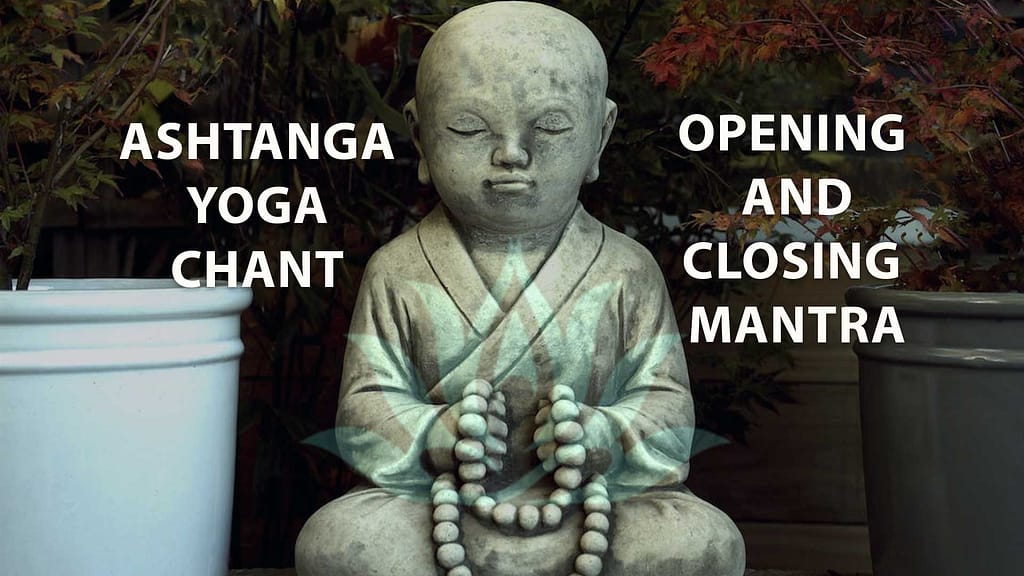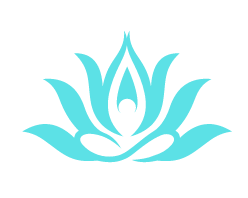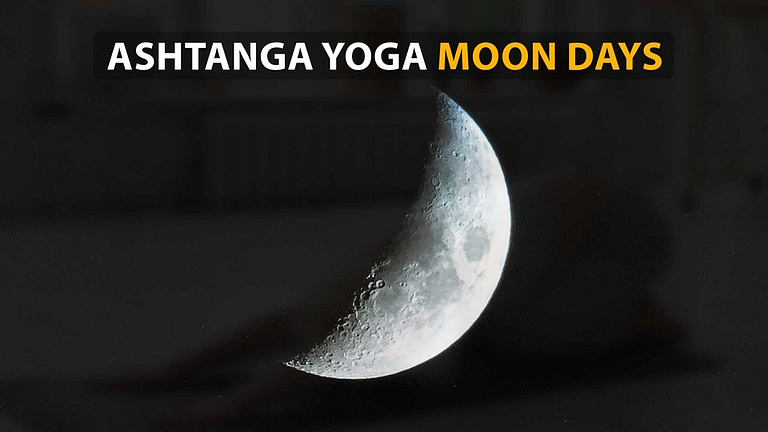Ashtanga Opening And Closing Mantra – ashtanga chant in 2024

Ashtanga Opening And Closing Mantra
I bow to the Guru, the bloodline, and all the masters who have kept the practices living. The joy of one’s Self coming to light. They act like a Medicine Man from the jungle.
The Ashtanga opening and closing mantras are traditional chants used at the start and finish of an Ashtanga yoga practice. But yoga is older than Hinduism, so the Hindu gurus of yoga added the opening and closing chants.
The yoga Taravalli and a prayer to Patanjali, the originator of the yoga sutras, are the two separate sources of the Ashtanga opening mantra.
Each practice begins and ends with the singing of the Ashtanga Opening Chant, which aims to respect the traditions of yoga, glorify the teacher, and create a sacred environment for practice.
Chanting has the effect of raising the practitioner’s vibrational state of consciousness. As a result, we become more connected to our source or higher self—the component of ourselves that never dies—and experience peace, calmness, and concentration.
Chanting is a fantastic companion to the physical practice of asana since studies have shown that it may stabilize the heart rate, reduce blood pressure, release healthy hormones, and enhance metabolic processes.
What is a yoga mantra?
A mantra is a word or group of words that people repeat out loud or in silence to call on divine powers. The root word manas in Sanskrit means “mind,” and ‘tra’ means “instrument” or “tool.”
What is the opening mantra of Ashtanga yoga?

The Ashtanga opening chant is traditionally chanted at the beginning of an Ashtanga yoga practice to honor the lineage of yoga teachers and express gratitude for their teachings. Here is a translation of the chant:
Vande Gurunam Charanaravinde
I bow to the lotus feet of the gurus
Sandarshita Svatma Sukhava Bodhe
By the grace of the guru, I awaken to the happiness of my own true self
Nishreyase Jangalikayamane
Having attained freedom from the jungle of delusion
Samsara Halahala Mohashantyai
I am purified of the poison of conditioned existence
Abahu Purushakaram
I salute the great teachers who embody the divine
Shankhacakrsi Dharinam
Who wield the conch, discus, and sword of discrimination
Sahasra Sirasam Svetam
The white thousand-headed serpent
Pranamami Patanjalim
I bow to Patanjali
Om
Read:
Can Beginners Do Ashtanga Yoga? Complete Guide In 2023
The ashtanga closing mantra (chant) and its meaning

The Ashtanga closing chant is traditionally chanted at the end of an Ashtanga yoga practice to express gratitude and offer blessings for the practice and all beings. Here is a translation of the chant:
Swasthi Praja Bhyaha Pari Pala Yantam
May the rulers of the earth keep to the path of virtue,
Nyayena Margena Mahim Mahishaha
May the religious and all peoples be forever blessed,
Gobrahmanebhyaha Shubamastu Nityam
May all beings everywhere be happy and free
Lokah Samastah Sukhino Bhavantu
May the entire universe be filled with peace and joy, love and light. Om, peace, peace, peace.
Om Shanti Shanti Shantihi
Om, peace, peace, peace.
Where does the Ashtanga opening chant come from?

There are two origins for the verses. The first two lines are taken from the Yoga Tārāvalīl, while the last two are from a common Patanjali prayer. It is believed that Patanjali is the author of several Sanskrit writings. The Yoga Sutras, a traditional yoga text, is the most well-known.
Adi Sankara’s Hatha Yoga literature, the Yoga Trval, is believed to date back to the fourteenth century. It is reported to have been a favorite of Krishnamacharya. The prayer to Patanjali appears to have no recognized roots.
The Ashtanga mantras express appreciation for the lineage of teachers who have made it possible for this age-old practice to remain across time. It helps to clear the practice area’s energy and sets up the mind for practice. Ashtanga’s last mantra brings the practice to a peaceful ending.
The discipline of yoga has roots in northern India and has been around for approximately 5,000 years. The Rig Veda, which translates to “River of Life,” is a collection of early religious texts that made mention of yoga.
Yoga, one of Hinduism’s six schools of thought, is an important component of Buddhism’s meditation techniques. Yoga is an ancient spiritual practice. It is seen as having a religious component (although yogic practices are also common to Buddhism and Jainism).
Read:
Does Yin Yoga Burn Calories? Benefits In 2023
How do I decide what to chant?

Usually, asking yourself what you need is the best way to find your theme. Let the loss guide you instead of being a weakness, but avoid getting too attached to one thing you think is right. It’s essential to try out new themes and see if they work for you. You might be shocked.
Effects of mantras on your body
Getting your breathing under control can help calm your mind and nervous system. Some studies have shown that repeating prayer can help lower blood pressure and improve general health and well-being. Many chants affect specific chakras, or energy centers, in the body.
the secret of mantras
Infinity is what each phrase is about. It is a sound that goes beyond what the mind can understand. When the reason can’t be known, it just disappears and goes into a place for meditation.
The strongest mantra
It is a version of the Gayatri phrase, which is the most important phrase in Hinduism. Shiva Gayatri Mantra is very strong. It brings peace of mind, which makes Lord Shiva happy.
Purpose of singing chants

When I say the chants, it reminds me that it’s not about the yoga poses I’m doing then. To be thankful that people have been teaching yoga for so long and that I can learn more and more about it.
Yoga helps me be more disciplined and pay close attention to what my body tells me. To feel like I have a relationship with my teachers and with myself. Instead of relying on how I “feel” or worrying about the effects, I practice with dedication and let go.
And most importantly, this practice allows me to ask for help to connect myself with the subtle yoga knowledge in the world.
This helps us understand the big picture (as below, so above, as above, so below). Making it easy to let go of lies and get to know our true Self.
Yoga doesn’t just help with physical pain; it also helps heal and avoid pain caused by mental and emotional behavior habits. And then to remember all of this for the rest of the day. With a sense of thanks.
Read:
What Is Special About Ashtanga Yoga? – 14 Benefits Of Ashtanga Yoga
Conclusion
The beginning chant of Ashtanga is a way to show thanks to the teachers who have kept this old practice alive over the years. It helps clear the space’s energy and prepares the mind for training. The Ashtanga ending chant is a peaceful way to stop the practice.
Chanting and saying mantras have been a part of yoga for thousands of years. Chanting is, of course, both making the rich, vibrating sounds and listening to them simultaneously.
Deep listening naturally stops the mind from wandering and gives you time to think about the patterns of your feelings, thoughts, and senses.
FAQ’s: Ashtanga Opening And Closing Mantra
Q1: What is the purpose of chanting mantras in yoga?
Chanting mantras in yoga serves multiple purposes. It helps to quiet the mind, enhance focus and concentration, create a vibrational energy within the body, foster a mind-body-spirit connection, and facilitate inner transformation and spiritual growth.
Q2: Can anyone chant mantras in yoga, or do you need specific training?
Mantra chanting is accessible to everyone, regardless of their background or level of training. While guidance from an experienced teacher can be helpful, anyone can engage in chanting mantras in yoga. It is more about the sincerity and intention behind the practice rather than having specific training.
Q3: How Do You Start And End Yoga Prayer?
After whatever peace phrase you choose, you usually start by saying Om and end by reciting Om Shanti Shanti Shanti.
Q4: How do mantras enhance the spiritual aspect of yoga practice?
Mantras help to awaken and activate energy centers within the body, promoting a deeper spiritual connection. They create a resonance that harmonizes the physical, mental, and energetic aspects of the practitioner, facilitating a more profound experience of the spiritual dimension of yoga.
Q5: How Long Does It Take For Chants To Work?
Sit down and repeat words every day for 10 to 15 minutes, and you’ll see the results in a few days.
Q6: How Do I Learn To Sing The Ashtanga Way?
In general, you can learn the Ashtanga yoga mantra by listening to it and reciting it line for line.
Q7: Do I Need To Chant?
When you’re new to yoga or Ashtanga, singing in a language you don’t know can feel strange. It’s OK to pay attention and listen along with the rest of the class. It is helpful to think about the meaning or purpose of the song. You should join in as you get used to it.
Video Guide
Read Also
- Ashtanga Yoga Moon Days – How Can We Calculate Moon Days In 2023?
- Ashtanga Vs Hatha Yoga – Which Form Of Yoga Is Best In 2023
- What Is The Ashtanga Yoga Of Patanjali? A Comprehensive Guide In 2023
- How Yoga Can Help You Live A Happy Life?
- Is Kriya Yoga Dangerous? Types, Tips, Advantages And Drawbacks in 2023
- Can Pranayama Cause Chest Pain? – 5 Causes Of Chest Pain Due To Pranayama In 2023






